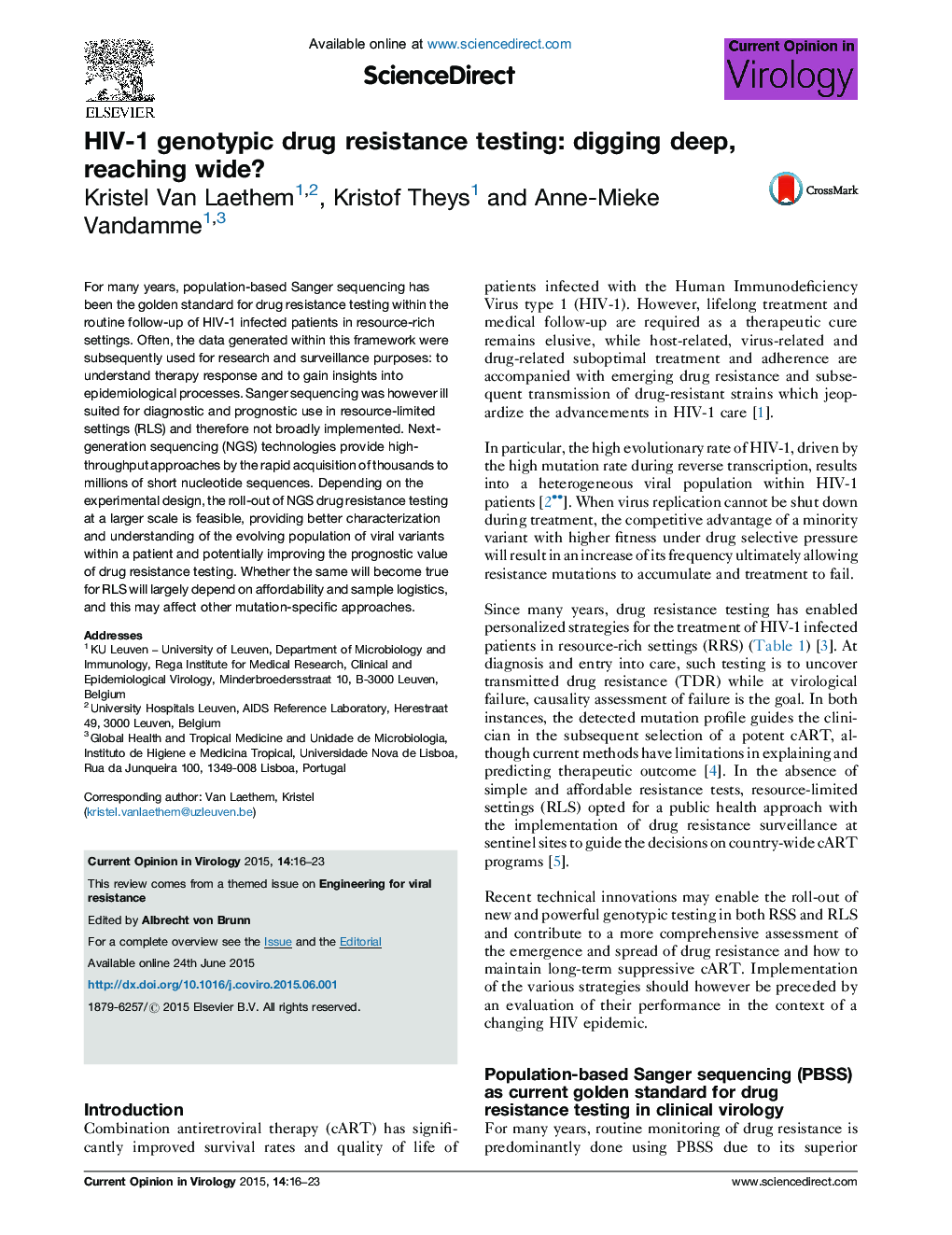| Article ID | Journal | Published Year | Pages | File Type |
|---|---|---|---|---|
| 2473242 | Current Opinion in Virology | 2015 | 8 Pages |
•Technological innovations enable the global roll-out of drug resistance surveillance.•Next-generation sequencing provides an answer for simultaneous resistance monitoring against all drugs.•Drug-class specific minority variants are associated with an increased risk of virological failure.•As a prognostic tool, ultra-deep sequencing has not yet shown to be superior over Sanger sequencing.•Technological innovations support scientific advancements that could improve prognostic testing.
For many years, population-based Sanger sequencing has been the golden standard for drug resistance testing within the routine follow-up of HIV-1 infected patients in resource-rich settings. Often, the data generated within this framework were subsequently used for research and surveillance purposes: to understand therapy response and to gain insights into epidemiological processes. Sanger sequencing was however ill suited for diagnostic and prognostic use in resource-limited settings (RLS) and therefore not broadly implemented. Next-generation sequencing (NGS) technologies provide high-throughput approaches by the rapid acquisition of thousands to millions of short nucleotide sequences. Depending on the experimental design, the roll-out of NGS drug resistance testing at a larger scale is feasible, providing better characterization and understanding of the evolving population of viral variants within a patient and potentially improving the prognostic value of drug resistance testing. Whether the same will become true for RLS will largely depend on affordability and sample logistics, and this may affect other mutation-specific approaches.
